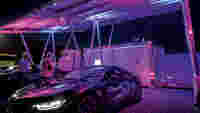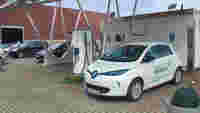Solar Fuel – Even at Night

A lack of charging infrastructure, among other factors, is slowing the advance of e-mobility in Germany. Ingenieurbüro Fehringer (IBF), an engineering consulting firm from Dortmund, might be able to advance the expansion with an innovative solution. It has developed a solar EV charging station which can provide green energy around the clock, thanks to a combination of photovoltaics and batteries. WAGO technology manages the interfaces and ensures secure data communication.
How will the federal government’s goal of one million electric vehicles on the roads in Germany be achieved by 2020? Many experts have already labeled the proposal unrealistic; there is both a lack of affordable e-vehicles with acceptable driving ranges and also an insufficient number of charging stations for the e-vehicles currently on the road. To drive, for example, from Dortmund to Minden and back, an e-vehicle with a range of 200 kilometers would have to charge somewhere along the return trip. But where? Fear of insufficient range is scaring off potential buyers.
Managing Batter Storage Systems Reliably – Here’s How WAGO Supports You:
- The WAGO Telecontrol PLC handles all the communication and interface management.
- An integrated GSM module enables secure email and SMS communication.
- In addition to telecontrol functions, the controller also offers visualization.
- Serial interfaces permit communication with other systems.

